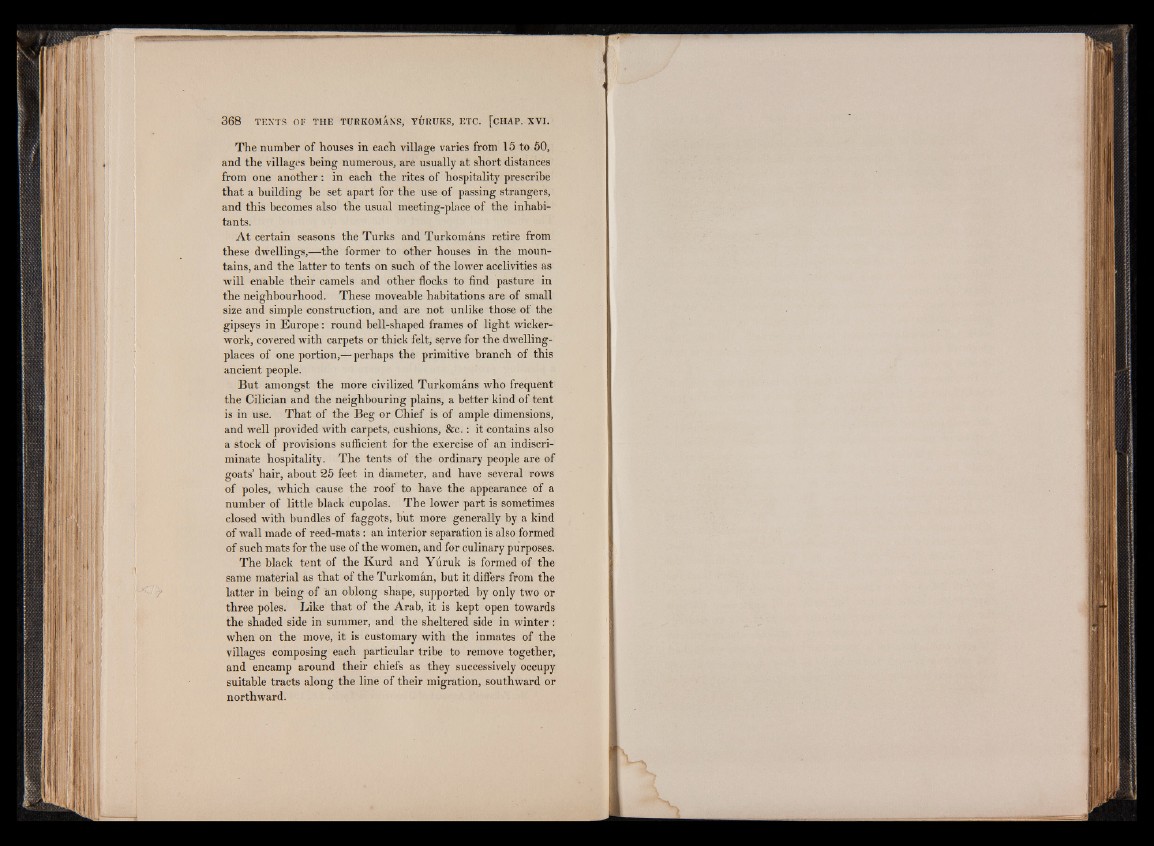
The number of houses in each village varies from 15 to 50,
and the villages being numerous, are usually at short distances
from one another: in each the rites of hospitality prescribe
that a building be set apart for the use of passing strangers,
and this becomes also the usual meeting-place of the inhabitants.
At certain seasons the Turks and Turkomans retire from
these dwellings,—-the former to other houses in the mountains,
and the latter to tents on such of the lower acclivities as
will enable their camels and other flocks to find pasture in
the neighbourhood. These moveable habitations are of small
size and simple construction, and are not unlike those of the
gipseys in Europe: round bell-shaped frames of light wickerwork,
covered with carpets or thick felt, serve for the dwelling-
places of one portion,— perhaps the primitive branch of this
ancient people.
But amongst the more civilized Turkomans who frequent
the Cilician and the neighbouring plains, a better kind of tent
is in use. That of the Beg or Chief is of ample dimensions,
and well provided with carpets, cushions, &c.: it contains also
a stock of provisions sufficient for the exercise of an indiscriminate
hospitality. The tents of the ordinary people are of
goats’ hair, about 25 feet in diameter, and have several rows
of poles, which cause the roof to have the appearance of a
number of little black cupolas. The lower part is sometimes
closed with bundles of faggots, but more generally by a kind
of wall made of reed-mats : an interior separation is also formed
of such mats for the use of the women, and for culinary purposes.
The black tent of the Kurd and Yuruk is formed of the
same material as that of the Turkoman, but it differs from the
latter in being of an oblong shape, supported by only two or
three poles. Like that of the Arab, it is kept open towards
the shaded side in summer, and the sheltered side in winter:
when on the move, it is customary with the inmates of the
villages composing each particular tribe to remove together,
and encamp around their chiefs as they successively occupy
suitable tracts along the line of their migration, southward or
northward.